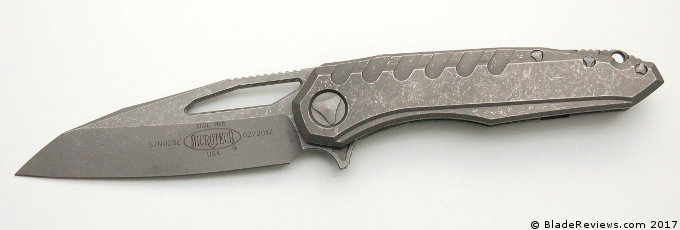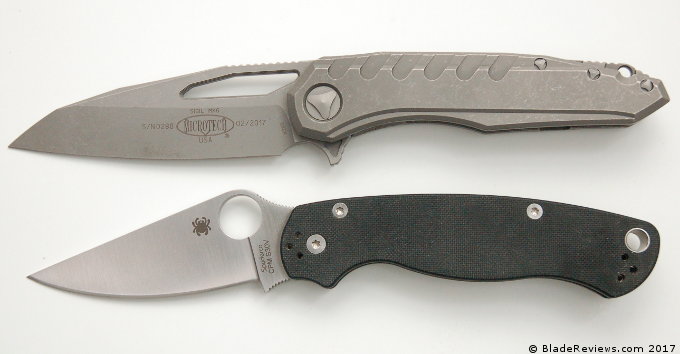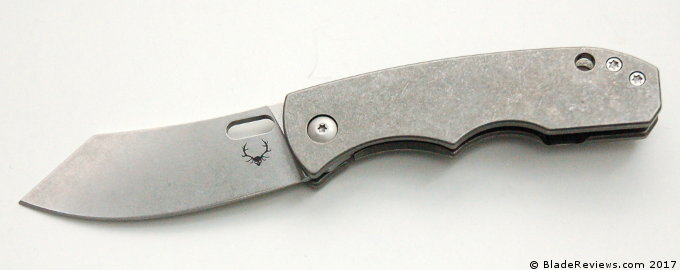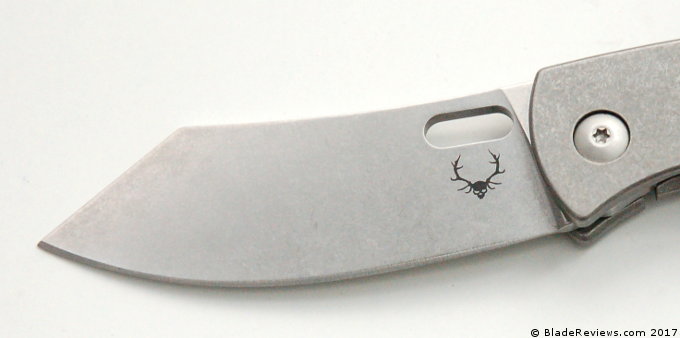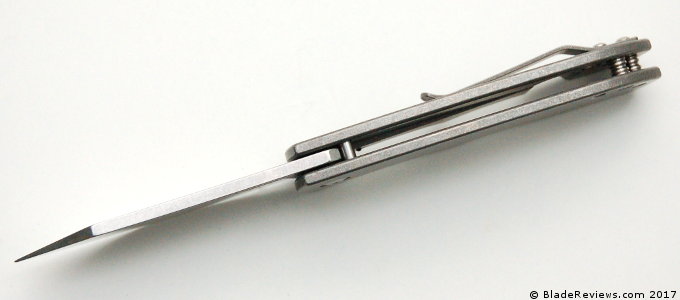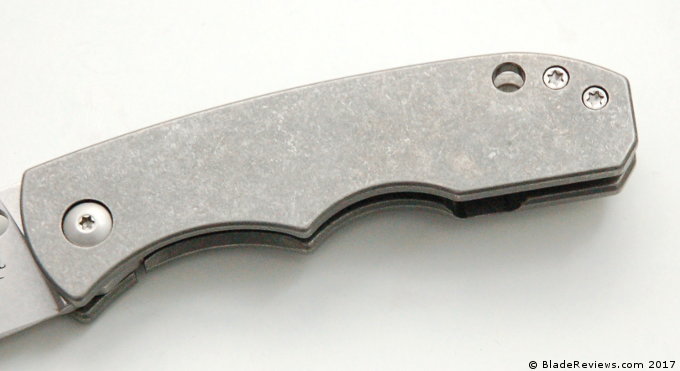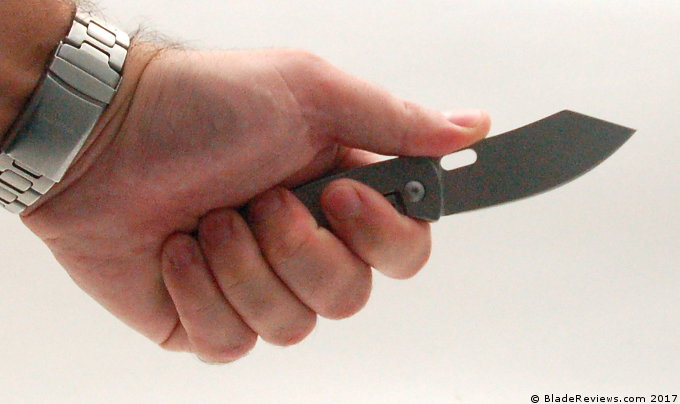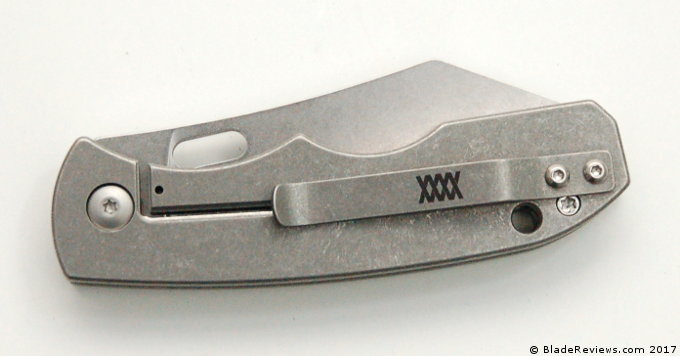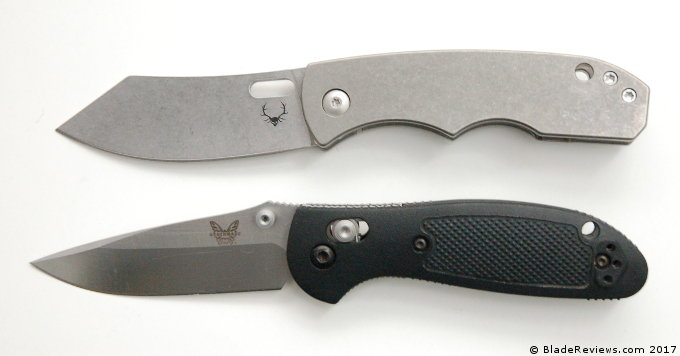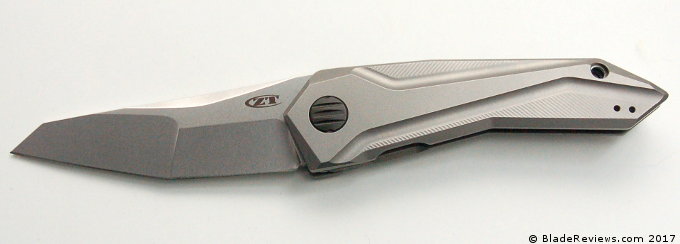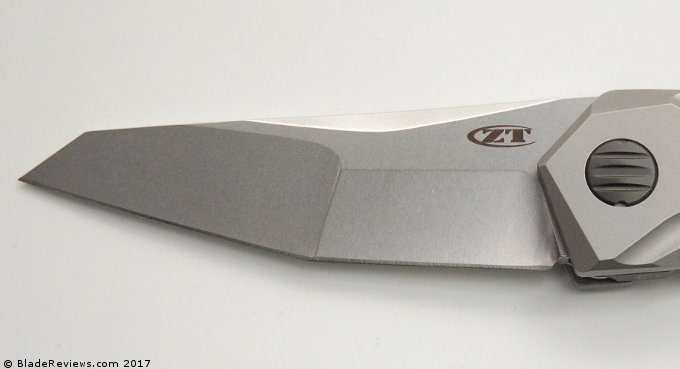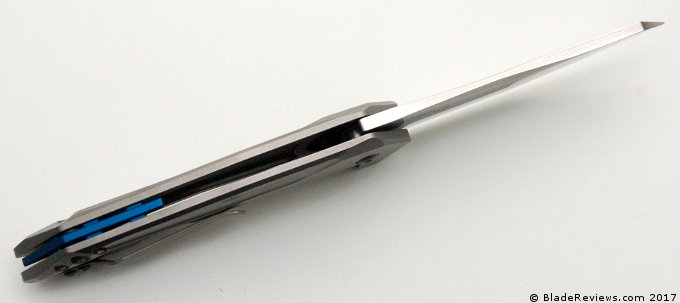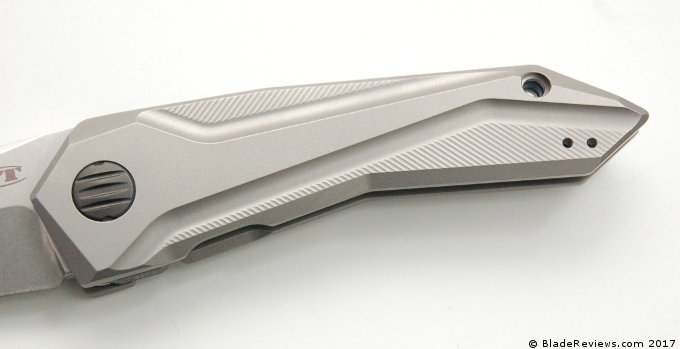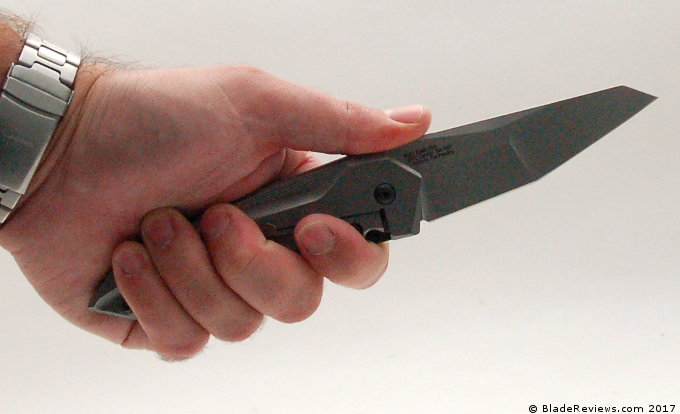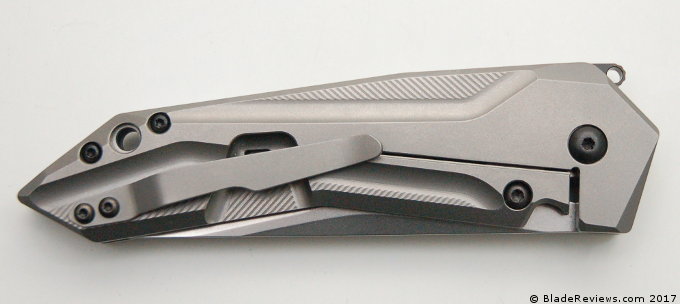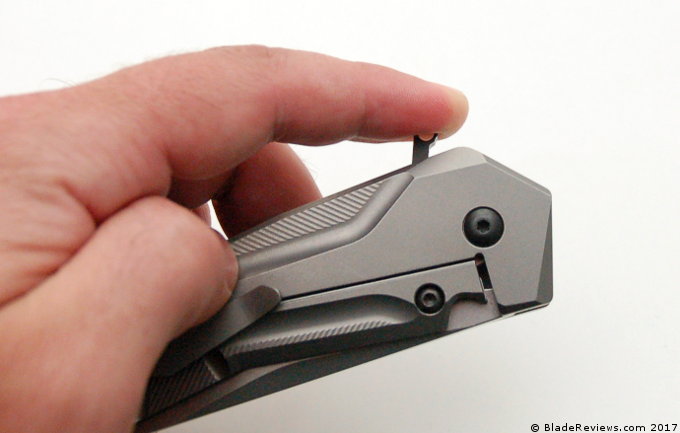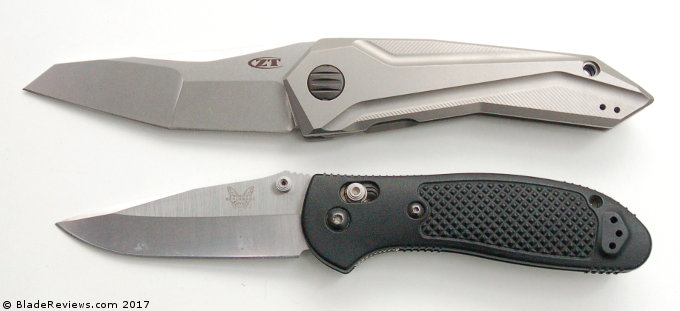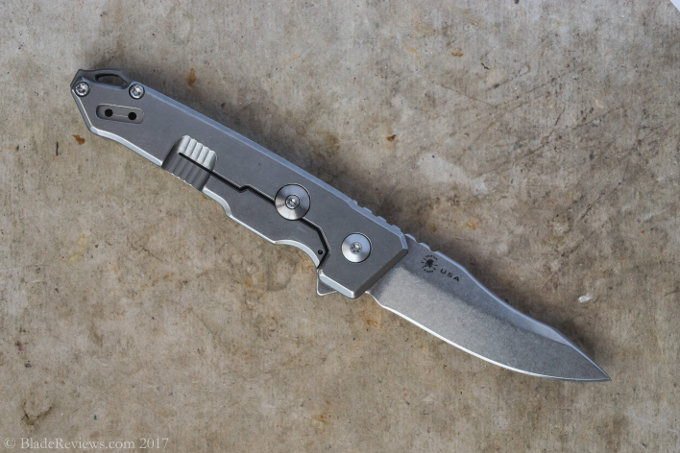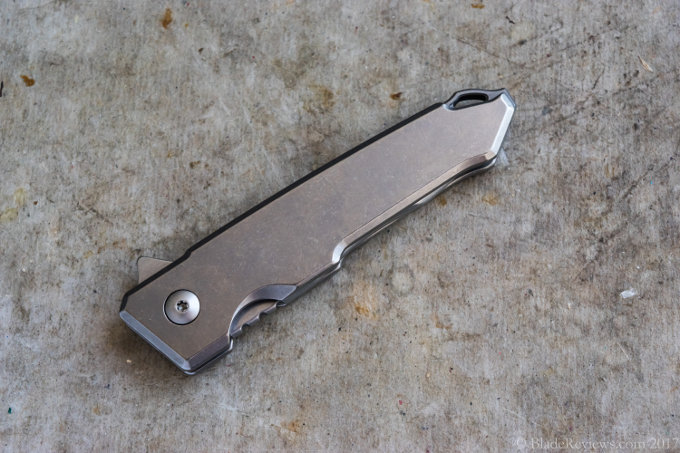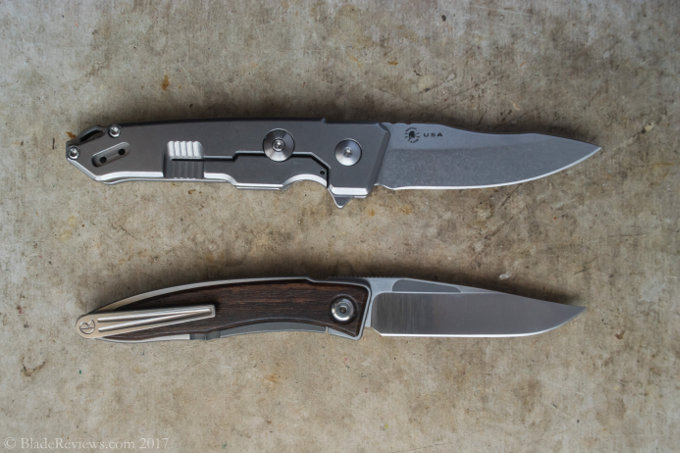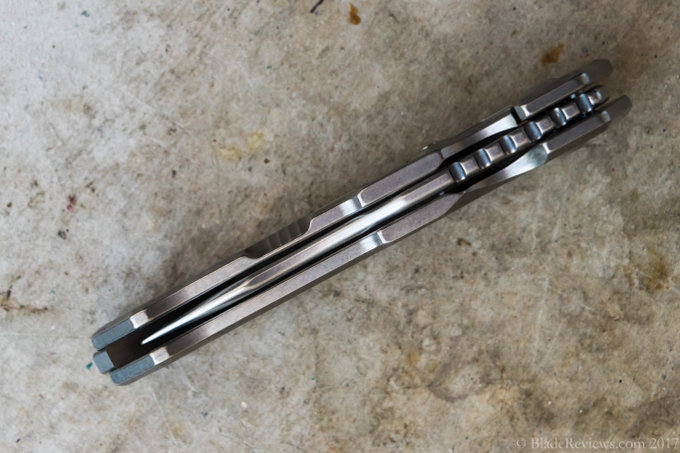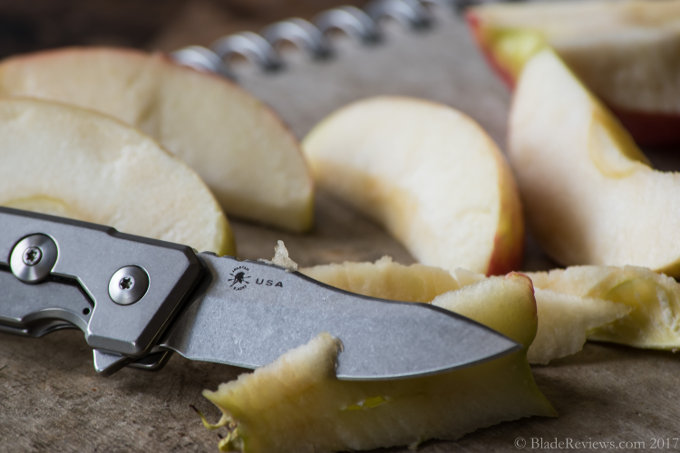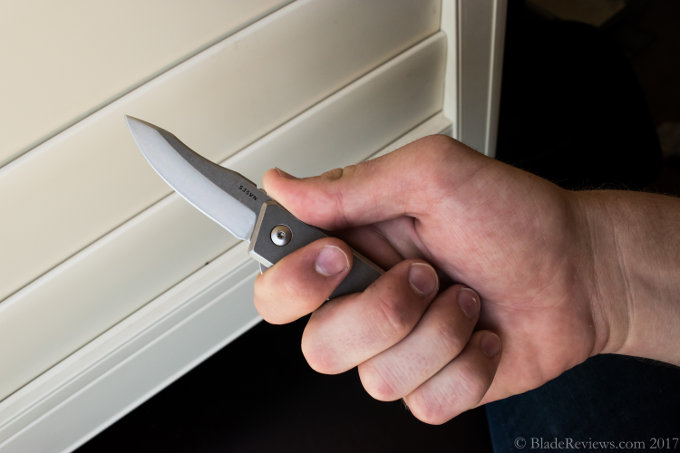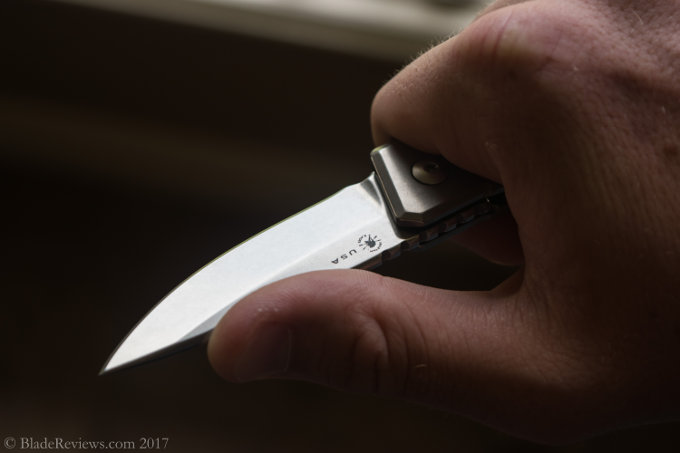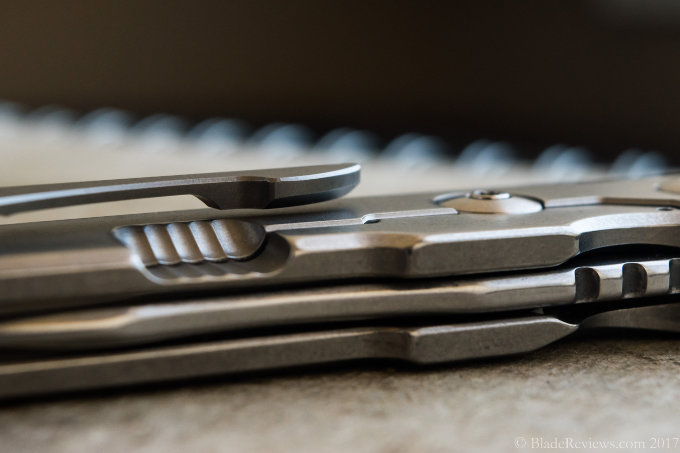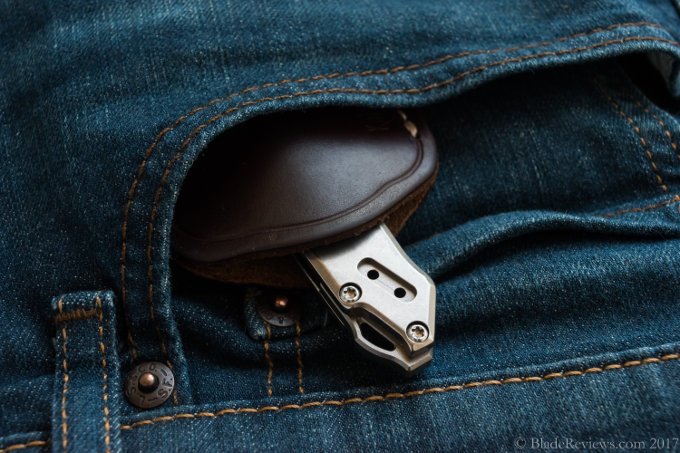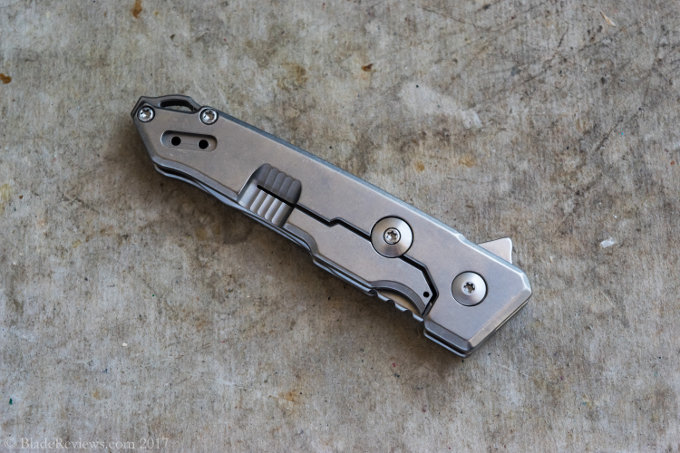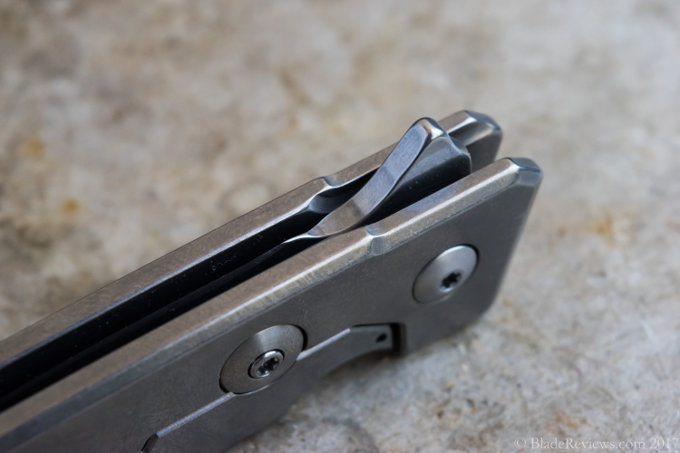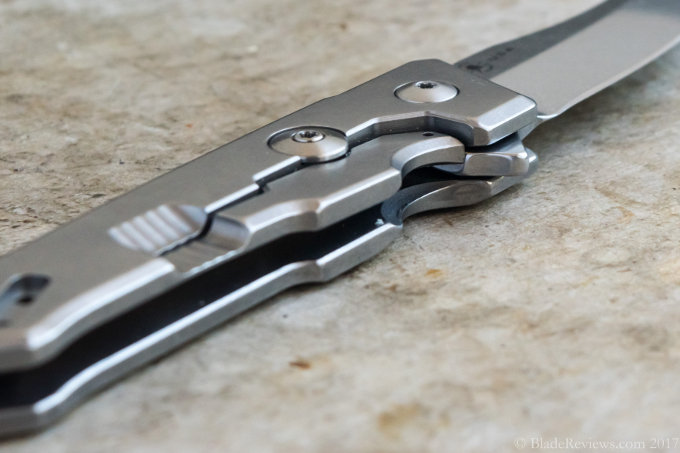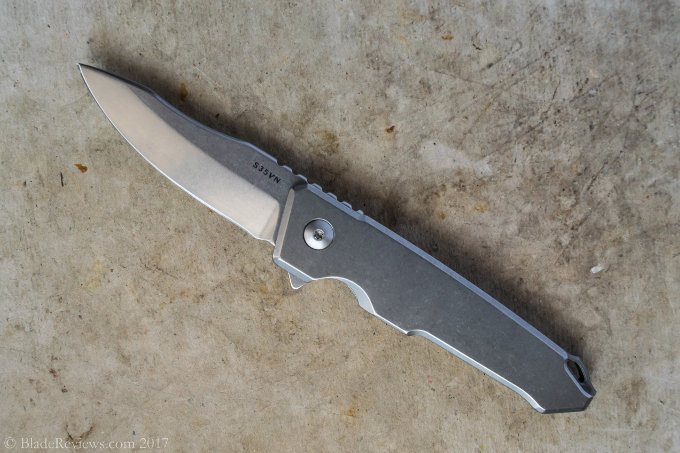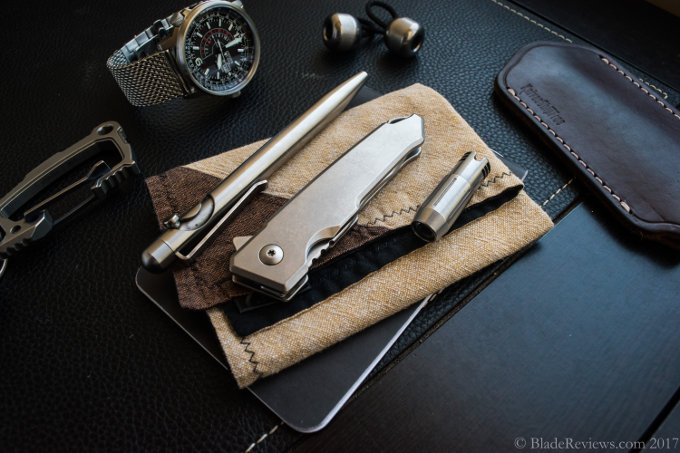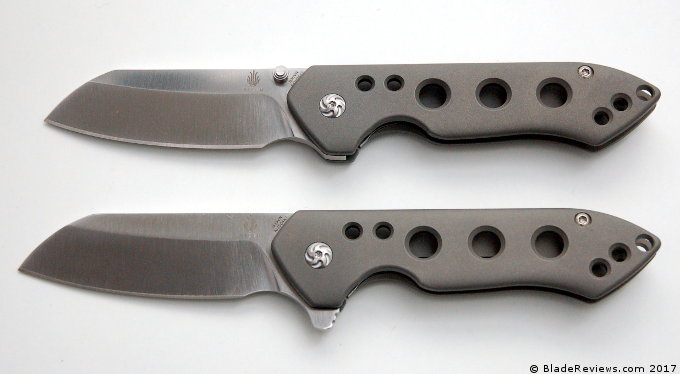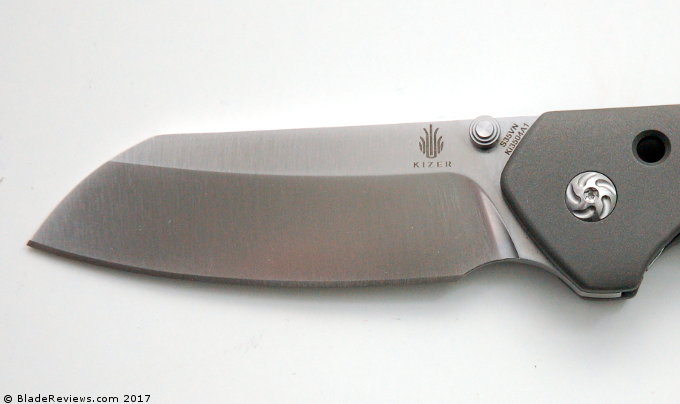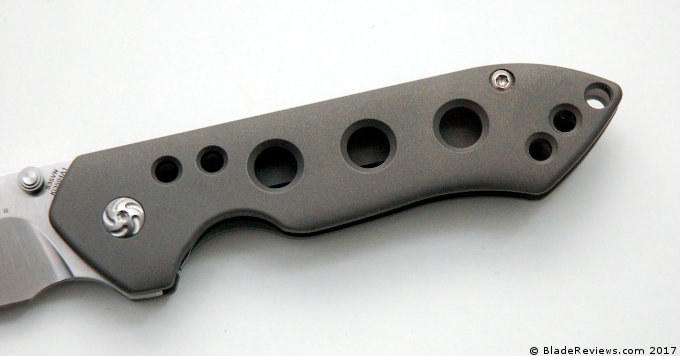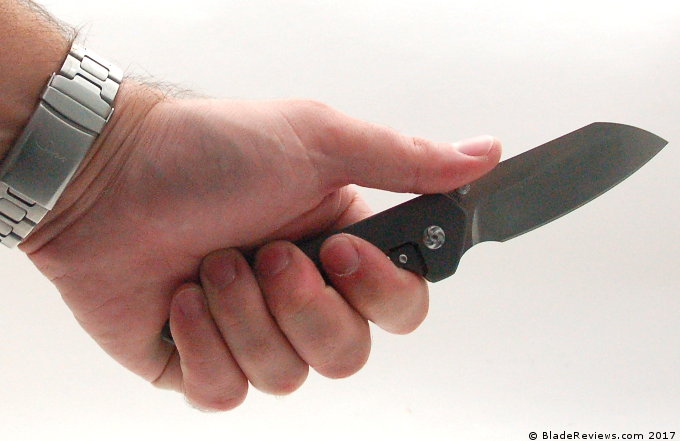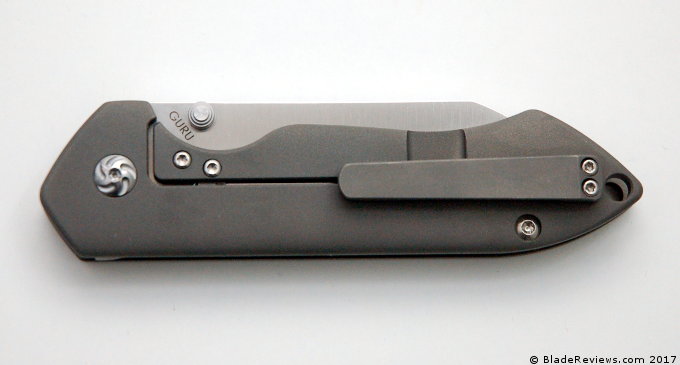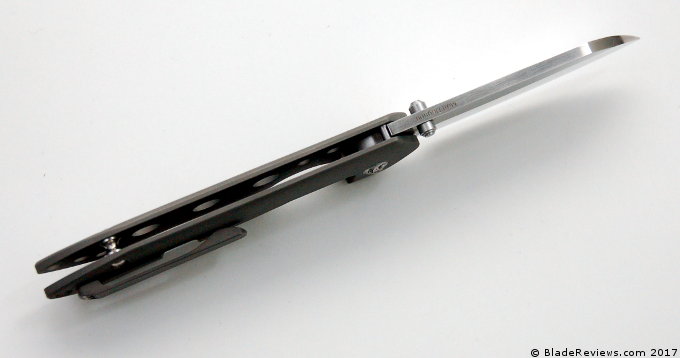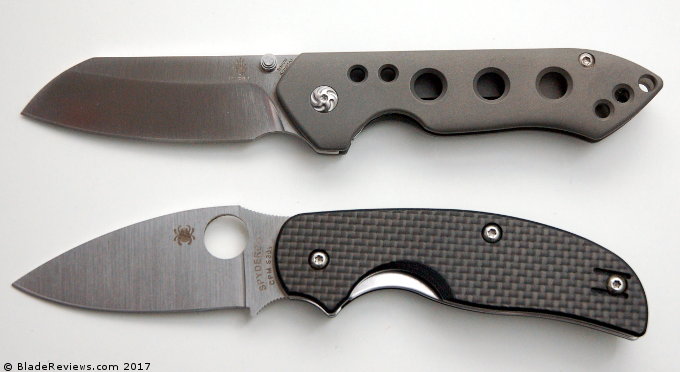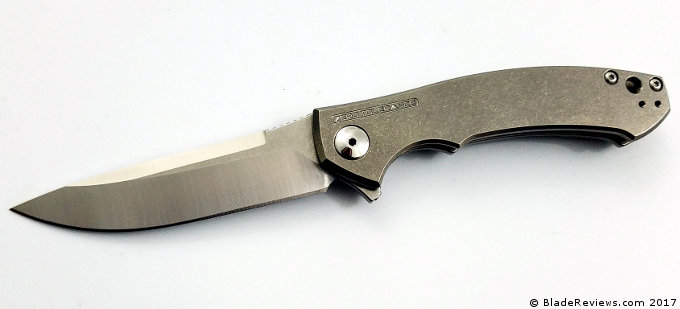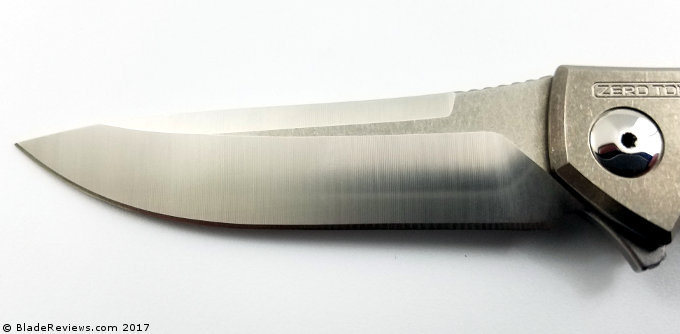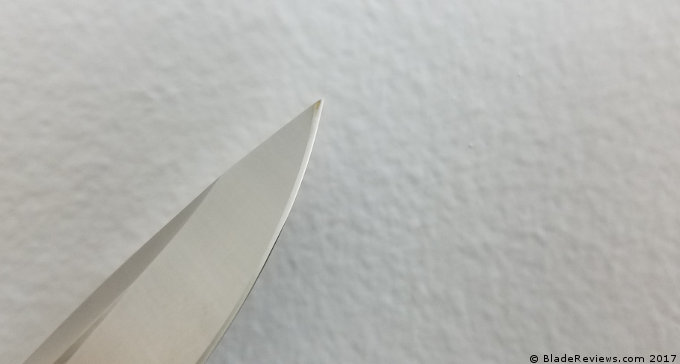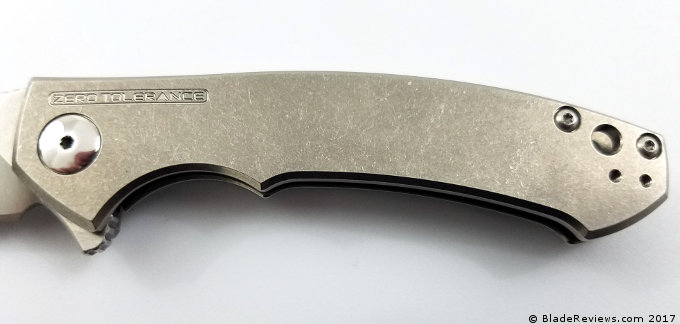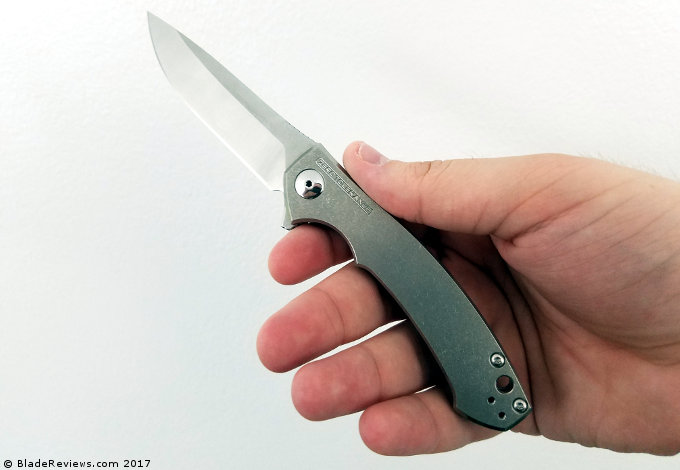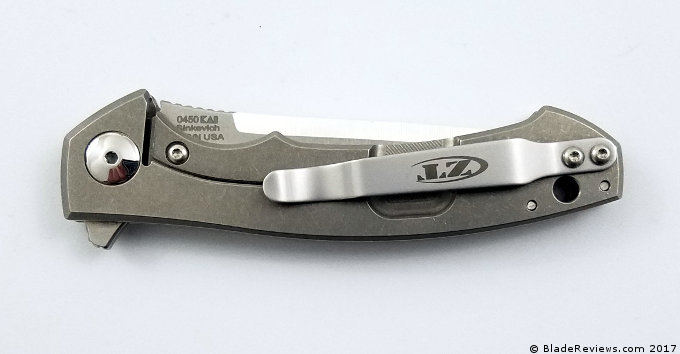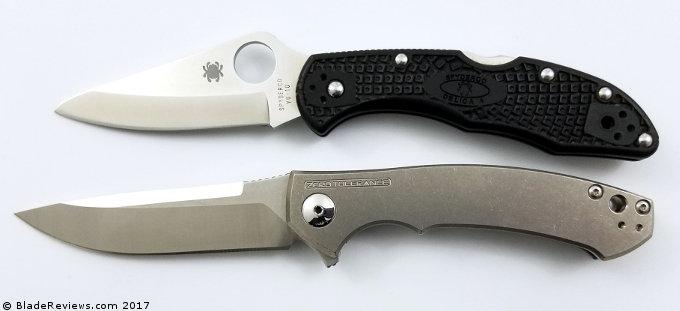There is depth to the knife industry. So much depth that a reviewer can review knives for 5 years, hire on 3 other writers to review knives, amass a catalog of over 300 knife reviews, and still not review knives from all the major manufacturers. That’s case with this website and Microtech at least. It’s almost shameful that we haven’t reviewed anything by Microtech yet. Thankfully, that gets remedied today.
Buy the Microtech Sigil at BladeHQ
Microtech is a medium sized knife manufacturer located in Bradford, PA. The company was founded in Vero Beach, FL in 1994, by Anthony Marfione, but then moved to Pennsylvania a decade later. As a Florida boy I have no idea why they would pack up and move to PA after 10 years. Usually it’s the other way around. There must be a lot of steel up in PA.
Microtech is known for their automatic knives, and their aggressive designs. Maybe that’s why it took me so long to buy one. I’m not a huge fan of autos, believing that a good manual folder can be almost as easy to operate, and less likely to draw the ire of law enforcement. Plus, their styling is the equivalent of Affliction shirts for the cutlery industry. Shockingly, a Microtech was the 3rd knife Jim Skelton ever reviewed. And it was from the “Zombie Tech” series at that. There is a lid for every pot.
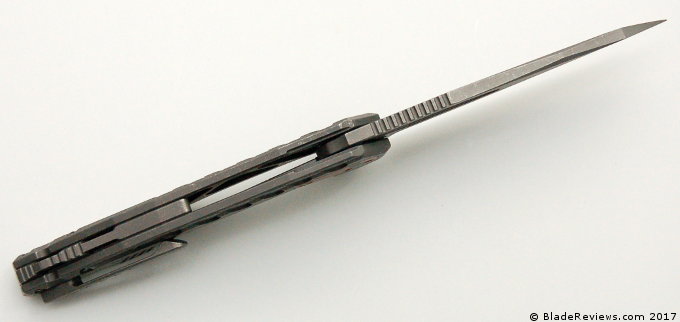
Aesthetic preferences aside, the blades are also pricey. Not that price has stopped me from reviewing a knife in the past. I just gotta get a good deal on it, or really want to check out the knife. Plus the recent ugliness with the Tony S. lawsuit didn’t rev me up about the company either. I have wanted to check their knives out, but something else always took priority.
That all changed when I picked up this Sigil MK6. What a cool knife. This Sigil is beautifully built and richly detailed. Whoever designed it clearly had a lot of fun. My version is the “Apocalyptic” flavor, with a full stonewash and copper accent piece. Lets dive in.
General Dimensions and Blade Details
The Sigil has an overall length of 8.75″, a 3.75″ blade, weighs 5.2 ounces, and is made in the USA. This is a sizable knife. It’s a bit more than I typically like to EDC, but it provides plenty of canvas. Microtech took advantage of this and covered every inch in ornamentation.
The floor to ceiling stonewash lends the knife an aged appearance, although my blade is date stamped “02/2017”.
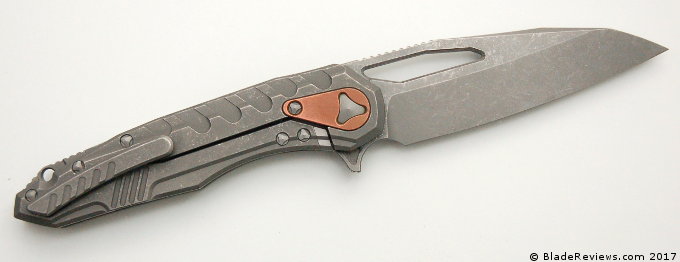
The blade is a long, sloping, modified drop point. The tip is dropped low, and you only get a slight amount of belly. The tip is also fine and delicate. The blade shape and thumb cutout resembles a prehistoric bird.
A lot of attention went into this blade, and the machining is top notch. The thumb hole has a series of steps milled around it. The finger choil is delicately chamferred. The flipper area has been pocketed. The grinds are beautiful and even. The edge has been uniformly applied. No detail has been overlooked on this blade.
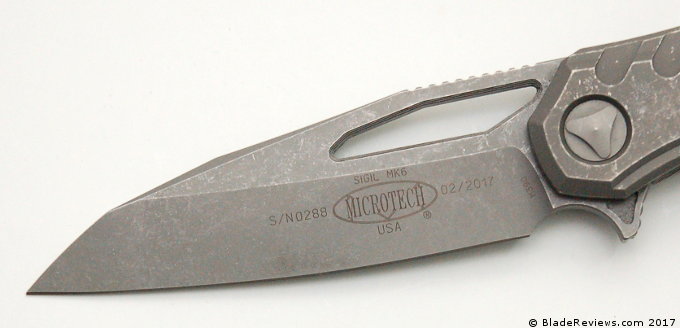
And the blade is made of M390 stainless steel. M390 is about as good as it gets in blade steel, exhibiting the enviable combination of high edge retention paired with easy sharpening. Most super steels are a bear to sharpen, but M390 isn’t bad. It’s one of my favorite blade steels and Microtech gives you almost 4 inches of it here with their Sigil.
Cutting performance is pretty good. The stock on this knife is relatively thick, and the partial flat grind has its geometric limits. Still I had no problem breaking down boxes, opening mail, and cutting fruit. The M390 held up like a champ.
Handle, Ergonomics, and Pocket Clip
The handle is a celebration of milling, and a thing of technical beauty. Microtech is a highly skilled manufacturer, and that comes out clearly in the handle of the Sigil. The titanium handle slabs have been meticulously tooled from all angles, to the point where this knife could pass for an extra on the Dark Crystal.
You can become lost in the complexity of the Sigil. The insides have been pocketed out to lighten the knife. There is also extra fine milling for the frame lock release, the hardware for the pocket clip is hidden, a full titanium floating backspacer, and a copper pivot shroud doubles as a lock bar stabilizer. Microtech’s trademark proprietary hardware holds it all together.
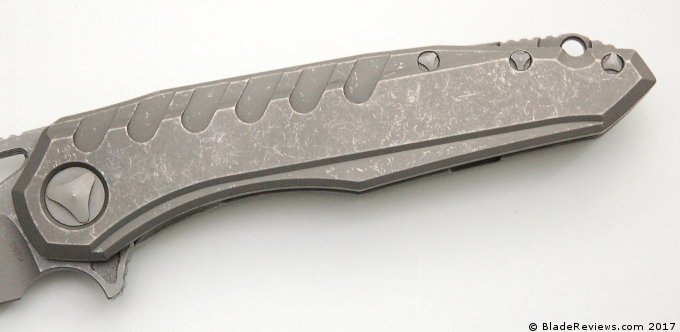
Speaking of the proprietary hardware, although a lot of people aren’t a fan of non-standard hardware, I think it adds something to the overall effect of the knife. It’s totally different and helps make the Sigil feel special. That said, it would have been great if they included a tool. Actually came loose a couple times. Keep in mind I got this knife gently used, so this isn’t a comment on how it came from the factory. I was able to tighten everything down with my finger nail, but this is far from ideal. Thankfully the pivot feels snug and I haven’t had to mess with it yet.
The simple handle shape and heavy chamferring of the titanium handle makes the Sigil a comfortable knife in hand. That should come as no surprise give how large this knife is. There is a small forward finger choil giving you extra options, but I find it to be a little tight relative to other knives with finger choils that I own. I’ve used it, but would advise against getting too aggressive with this finger choil. Good jimping is found on the thumb ramp, flipper tab, and backspacer. Although it lacks corrugated G-10, this isn’t a slippery knife by any means.
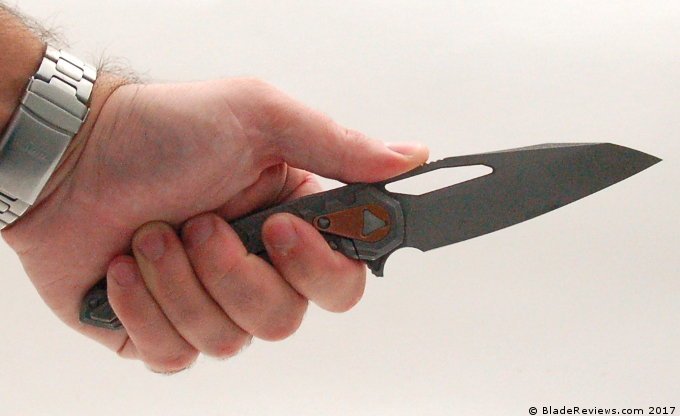
The pocket clip is made of milled titanium. Milled clips have done a bit of an 180 over the past few years. When they originally came out they were the bee’s knees. Then they sort of fell out of favor when people found them to be less effective than traditional stamped steel clips. I still like a milled clip if it’s done right.
I’d say the clip on this Sigil is pretty good. It is snug up against the handle and has some spring tension. It’s not crazy spring tension, and I wouldn’t recommend jumping out of an airplane with the Sigil clipped to your pocket, but there is spring tension and the knife is held in place in your pocket. The hidden hardware aspect of it is awesome, and the machining is top notch.
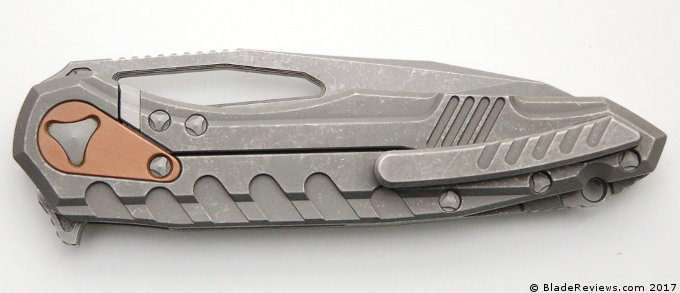
The Sigil carries about how I would expect. It’s a large full titanium folder. Not a total boat anchor, but you feel its presence in your pocket.
Deployment and Lockup
The Sigil is a flipper on bearings. Flipping action is excellent. The generously jimped flipper, strong detent, and smooth bearing system scores the action of this knife a solid “8” on my somewhat arbitrary 1-10 scale for flippers. Better than average, but not a rocket launcher. In addition to the flipper there is an elongated thumb hole. It’s fully functional and you can open up the blade with the thumb hole if you want to be more subtle.
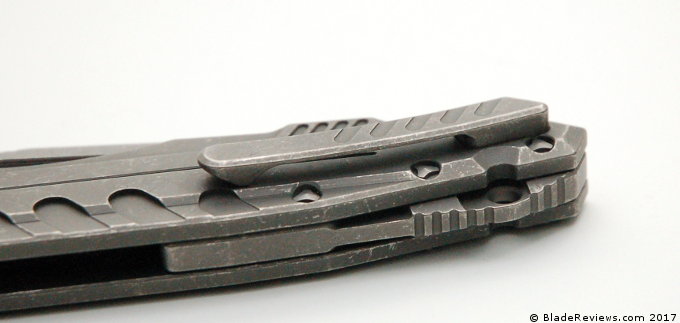
For lockup we have a titanium framelock with stainless steel lockbar insert. The engineering wizards at Miroctech did a fine job designing this frame lock. It is totally secure, with no blade play to speak of, yet the lock is easy to disengage. This is thanks to good lock geometry, and excellent milling on the portion of the lockbar where your thumb goes to release the lock.
As I mentioned previously, there is a copper pivot collar that doubles as a lock bar stabilizer. A nice touch and the only splash of color on an otherwise grey knife.
Here is a shot of the Sigil next to my Paramilitary 2:
It’s a little longer than the Para 2, but you get a lot more blade. Speaking of which, blade centering is perfect on my knife.
Microtech Sigil MK6 Review – Final Thoughts
The Sigil is an impressive knife. Microtech’s styling may not be to everyone’s taste, and this is a bigger knife, but you can’t argue that the Sigil has been beautifully executed with top shelf materials.
Almost every bell and whistle you could ask for is included. A milled clip, milled out handles, floating back spacer, hidden hardware, top shelf blade steel, and tons of machining. Fit and finish is outstanding. And this knife is made in the USA.
My only gripe is that the body screws come loose and they don’t supply the tool to tighten them.
This isn’t an inexpensive knife, but for just under $400 I think you get what you pay for. It’s almost on par with my old Shirogorov 95t, and that knife clocks in at 200%+ of the cost. Any interesting comparison is with a Sebenza.
While this is far from being an everyman’s EDC, I think those whose interests are piqued by the concept of the Sigil will be happy with this knife. It exceeded my expectations, and it makes me want to review more Microtechs in the future. Speaking of which, I really like the Sebastian Benja designed Stitch. I think that will be my next acquisition.
I know the Sigil is not a knife for everyone, so I won’t give it a blanket endorsement. But I give it 2 thumbs up if you are already in the market for this knife.
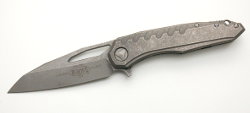
Microtech Sigil – From $390.00
From: BladeHQ
I recommend purchasing the Microtech Sigil at BladeHQ. Please consider that buying anything through any of the links on this website (including Amazon) helps support BladeReviews.com, and keeps the site going. As always, any and all support is greatly appreciated. Thank you very much.
